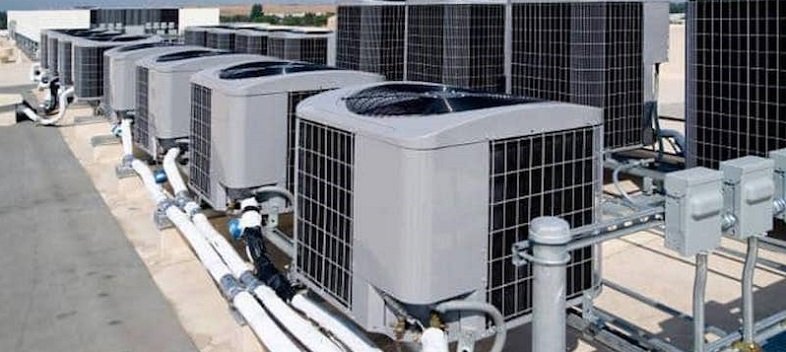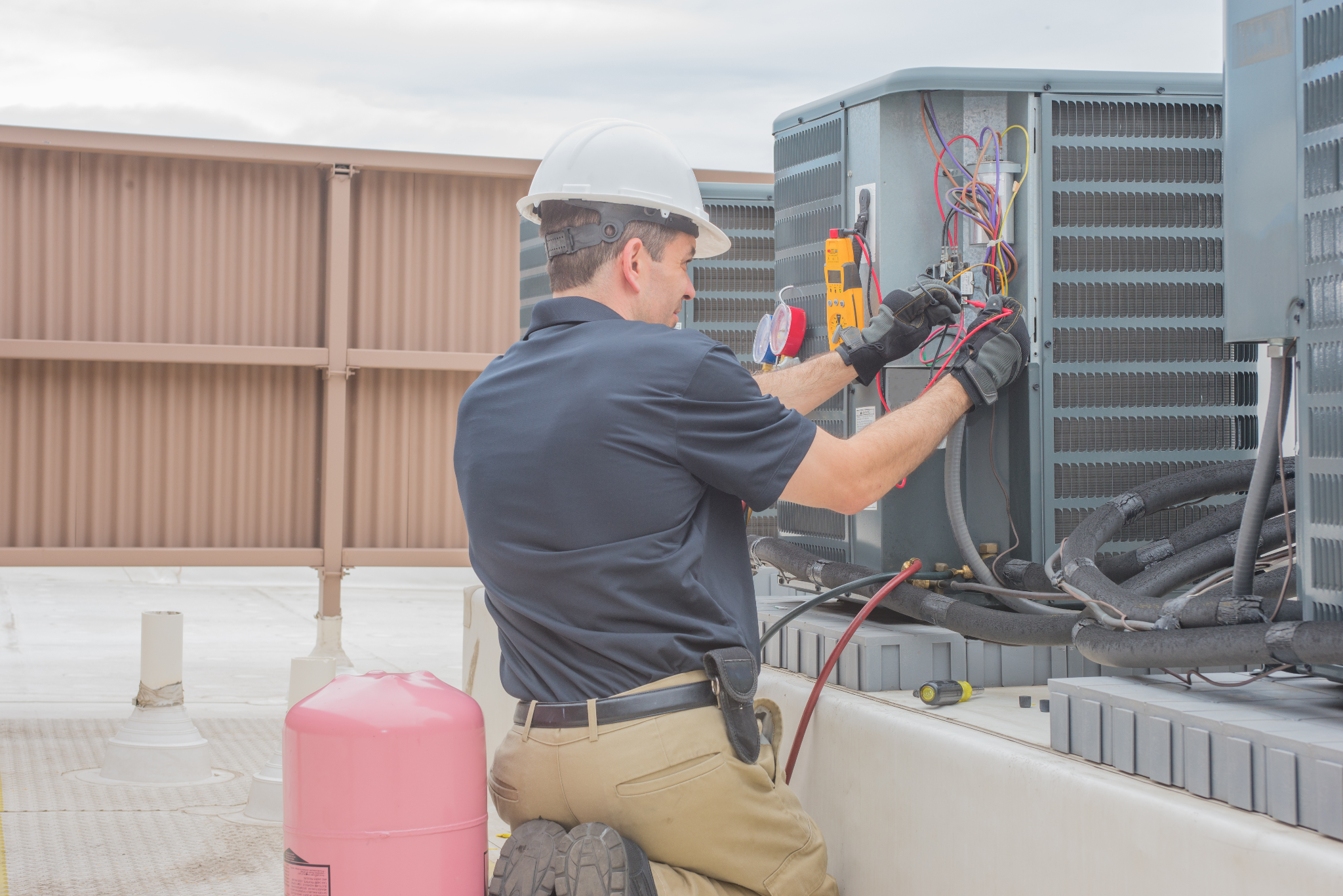The Homeowner’s Handbook to Installing ductless mini splits in Any Climate
The Homeowner’s Handbook to Installing ductless mini splits in Any Climate
Blog Article
How a Heatpump and Furnace Interact to Maximize Your Home's Heating Performance
Understanding just how a heatpump and heating system interact is necessary for homeowners seeking reliable home heating solutions. Each system has its staminas, providing a well balanced strategy to home convenience. The heatpump succeeds in modest temperatures, while the heating system provides quick heat throughout severe cold. This harmony not only decreases power costs yet likewise boosts the life-span of both home appliances. What elements affect this partnership, and exactly how can property owners maximize their benefits?
Understanding Heat Pumps: How They Work
Although lots of people might be unknown with their internal workings, heat pumps play a crucial function in modern home heating systems. These tools run by transferring heat from one place to one more, utilizing the concepts of thermodynamics. In colder months, a heatpump essences warm from the outdoors air, ground, or water, and transfers it inside your home to warm up the space. On the other hand, throughout warmer months, it can turn around the process, functioning as an air conditioning system by removing heat from inside to the outside.Heat pumps are composed of an evaporator, expansion, condenser, and compressor valve. The refrigerant within the system soaks up heat as it vaporizes at reduced temperatures and stress. The compressor after that enhances the pressure and temperature level of the cooling agent, permitting it to release warm as it condenses. This reliable procedure can substantially minimize energy intake compared to standard heating methods, making heatpump a sustainable option for climate control in homes.
The Function of Heaters in Home Heating
Heaters play a necessary function in home heating by supplying a trustworthy source of warmth throughout the colder months. They run by producing heat with burning or electric resistance, distributing it throughout the home through air ducts or radiant systems. The performance of a heater is usually gauged by its Yearly Fuel Utilization Efficiency (AFUE) rating, which indicates just how properly the unit converts gas right into heat.Furnaces can utilize various energy sources, consisting of all-natural gas, electricity, oil, or lp, permitting house owners to select one of the most appropriate alternative for their needs. Unlike heatpump, which may struggle in extreme chilly, furnaces preserve constant efficiency, ensuring that interior temperatures continue to be comfy no matter exterior conditions. In addition, modern-day heating systems often come outfitted with advanced technology, such as smart thermostats and variable-speed blowers, enhancing their effectiveness and responsiveness. This flexibility makes heaters a vital part in all-encompassing home heating approaches.

Advantages of Using Both Equipments Together
Combining the toughness of both heating systems and warm pumps can result in a much more reliable and effective home heating option. Using both systems enables home owners to capitalize on the heat pump's power efficiency during milder temperatures while counting on the furnace for more severe cold problems. This dual technique can considerably lower energy prices, as heatpump take in much less electrical power than traditional home heating methods when temperature levels are moderate.Additionally, utilizing both systems together can improve convenience degrees in the home. Heat pumps can provide consistent, also heating, while heating systems can quickly increase ambient temperature levels when needed. Furthermore, the integration of both systems can extend the life expectancy of equipment by decreasing wear and tear on each unit, as they share the work. Inevitably, property owners can take pleasure in a well balanced, economical heating service that readjusts effortlessly to varying climate problems, ensuring a cozy and welcoming home throughout the cold weather.
Exactly How Warm Pumps and Furnaces Complement Each Various Other
They produce a complementary heating system that optimizes efficiency and convenience when house owners integrate warm pumps and heaters. Warm pumps run by transferring warm from the outdoors air or ground, making them very efficient in modest environments. They succeed during milder temperatures, offering cost-efficient heating. Conversely, heating systems generate heat through combustion or electrical resistance, supplying strong, immediate heat throughout severe cool conditions.The combination of these two systems allows for vibrant adjustments based upon temperature changes. Throughout warmer months or milder winter season days, the heatpump can take the lead, preserving power and reducing expenses. As temperature levels drop, the heater can effortlessly engage, making certain consistent heat throughout the home. This harmony not only maximizes energy usage however also improves the life expectancy of both systems, as each unit runs within its optimal efficiency array. Together, they develop a well balanced environment that adapts to differing environment demands.
Maximizing Performance: Tips for Homeowners
Home owners can boost their home heating effectiveness with numerous functional strategies. Establishing a routine maintenance schedule, integrating wise thermostat technology, and carrying out efficient insulation and sealing solutions are essential actions. These actions not just boost convenience yet likewise decrease power costs.
Routine Maintenance Set Up
To guarantee maximum home heating performance, establishing a routine upkeep timetable is crucial for any type of home. Home owners need to focus on routine inspections of both heatpump and furnaces to ascertain peak efficiency. This includes changing air filters each to three months, as clogged up filters can considerably minimize effectiveness. Additionally, organizing specialist upkeep a minimum of annually permits service technicians to determine and resolve possible problems before they escalate. Home owners ought to likewise clean up the heatpump's exterior unit to avoid debris buildup that can hinder air movement. By adhering to a regular upkeep timetable, home owners not only improve their heater' efficiency however additionally prolong their lifespan, causing greater convenience and reduced energy expenses throughout the colder months.
Smart Thermostat Integration
Incorporating a smart thermostat into a home furnace can considerably boost power performance, especially as it permits specific control over temperature settings. These tools can learn the home owner's timetable and preferences, immediately readjusting the temperature to like this maximize comfort while lessening energy use. For example, they can lower home heating throughout times when the home is vacant, decreasing unneeded intake. Many wise thermostats likewise offer real-time energy use data, enabling home owners to make enlightened choices regarding their home heating practices. In addition, remote access using smart device apps permits customers to readjust settings from anywhere, making sure the home is cozy upon return. Generally, clever thermostat combination not just enhances convenience however significantly adds to energy savings and efficiency.
Insulation and Sealing Solutions
Smart thermostats play a crucial function in energy performance, however their effectiveness can be substantially enhanced by proper insulation and sealing services. Homeowners must prioritize protecting walls, attic rooms, and floors to minimize heat loss. Top quality insulation materials, such as spray foam or fiberglass, can considerably enhance thermal resistance. Furthermore, securing spaces around home windows, ducts, and doors avoids cold air infiltration and heat getaway. Weatherstripping and caulking are efficient techniques for dealing with these leakages - ductless mini splits. Regular assessments for air leakages, together with the usage of blower door tests, can assist identify issue locations. By investing in insulation and sealing, property owners can optimize the performance of their heating unit, eventually causing decreased power usage and reduced energy costs
Common Misconceptions Concerning Heat Pumps and Furnaces
What misunderstandings surround warm pumps and heating systems? Lots of people mistakenly think that heat pumps are inadequate in colder climates. In reality, modern-day heatpump are designed to operate successfully even in low temperatures, supplying dependable home heating throughout winter. Another my blog usual misconception is that heating systems are constantly more effective than heatpump. This depends on the particular energy sources and effectiveness rankings of the systems in concern. Some may additionally think that utilizing both systems simultaneously is unnecessary, but actually, this combination can maximize home heating performance, especially throughout extreme climate condition. In addition, individuals usually think that heatpump require constant maintenance, when in reality, they have similar maintenance requires to typical heating unit. By disproving these myths, homeowners can make even more informed choices regarding their home heating choices, ultimately leading to improved comfort and power effectiveness in their homes.
Upkeep Factors To Consider for Combined Solutions

Frequently Asked Inquiries
Can Heat Pumps Work Efficiently in Extremely Cold Climates?
Heat pumps can have a hard time in incredibly chilly environments because of reduced effectiveness and warmth extraction restrictions. Nonetheless, innovations in technology have led to designs made for far better performance in such conditions, enhancing their viability in harsh environments.
For How Long Do Warmth Pumps and Furnaces Generally Last?
Heat pumps normally last 15 to two decades, while heaters have a life-span of 15 to three decades. Routine upkeep can expand their long life, guaranteeing effective operation and decreasing the requirement for premature substitutes.

What Is the Ordinary Expense of Installing Both Solutions?
The ordinary expense of mounting both a heatpump and a furnace normally ranges between $5,000 to $10,000 - ductless mini splits. Variables influencing this expense consist of system size, installation complexity, and local labor prices
Exist Tax Obligation Rewards for Using Energy-Efficient Home Heating Equipments?
Numerous homeowners make inquiries about tax rewards for energy-efficient home heating systems. Various government and state programs commonly supply rebates or credit scores, motivating the fostering of sustainable innovations to decrease power usage and advertise environmental obligation.
Exactly how Do I Pick the Right Size Heat Pump and Furnace?
Selecting the right size warmth pump and heating system entails calculating the home's square video footage, taking into consideration insulation top quality, and evaluating local climate. Consulting a specialist can guarantee perfect system performance and energy efficiency based upon details demands. heat pump installation ooltewah tn. Recognizing just how a heat pump and furnace work together is important for property owners seeking efficient home heating options. In chillier months, a heat pump essences warm from the outside air, ground, or water, and transfers it indoors to warm up the living area. When homeowners integrate warmth pumps and heaters, they produce a complementary home heating system that makes best use of performance and comfort. Warm pumps operate by moving warmth from the outdoors air or ground, making them extremely efficient in modest climates. Warm pumps can have a hard time in extremely cool climates due to reduced efficiency and heat extraction constraints
Report this page